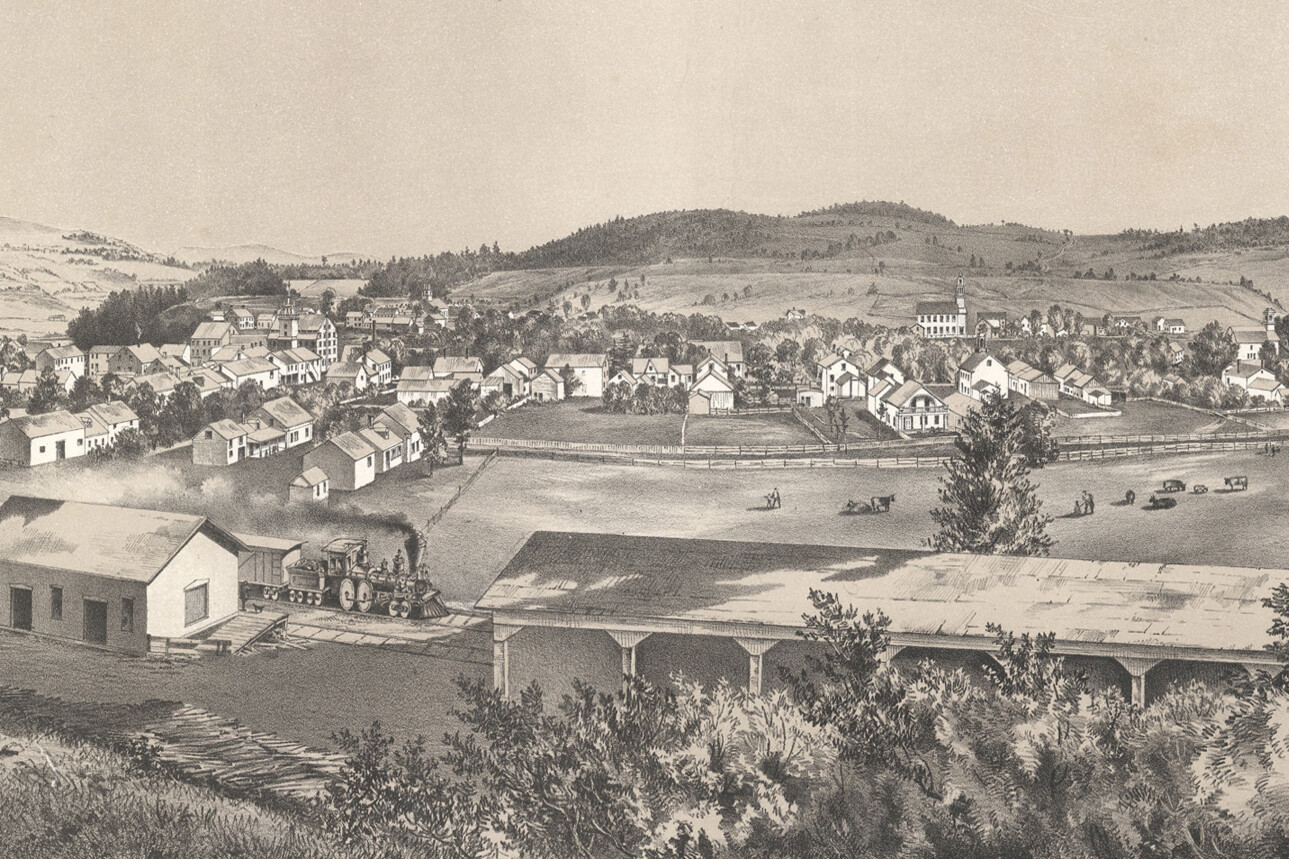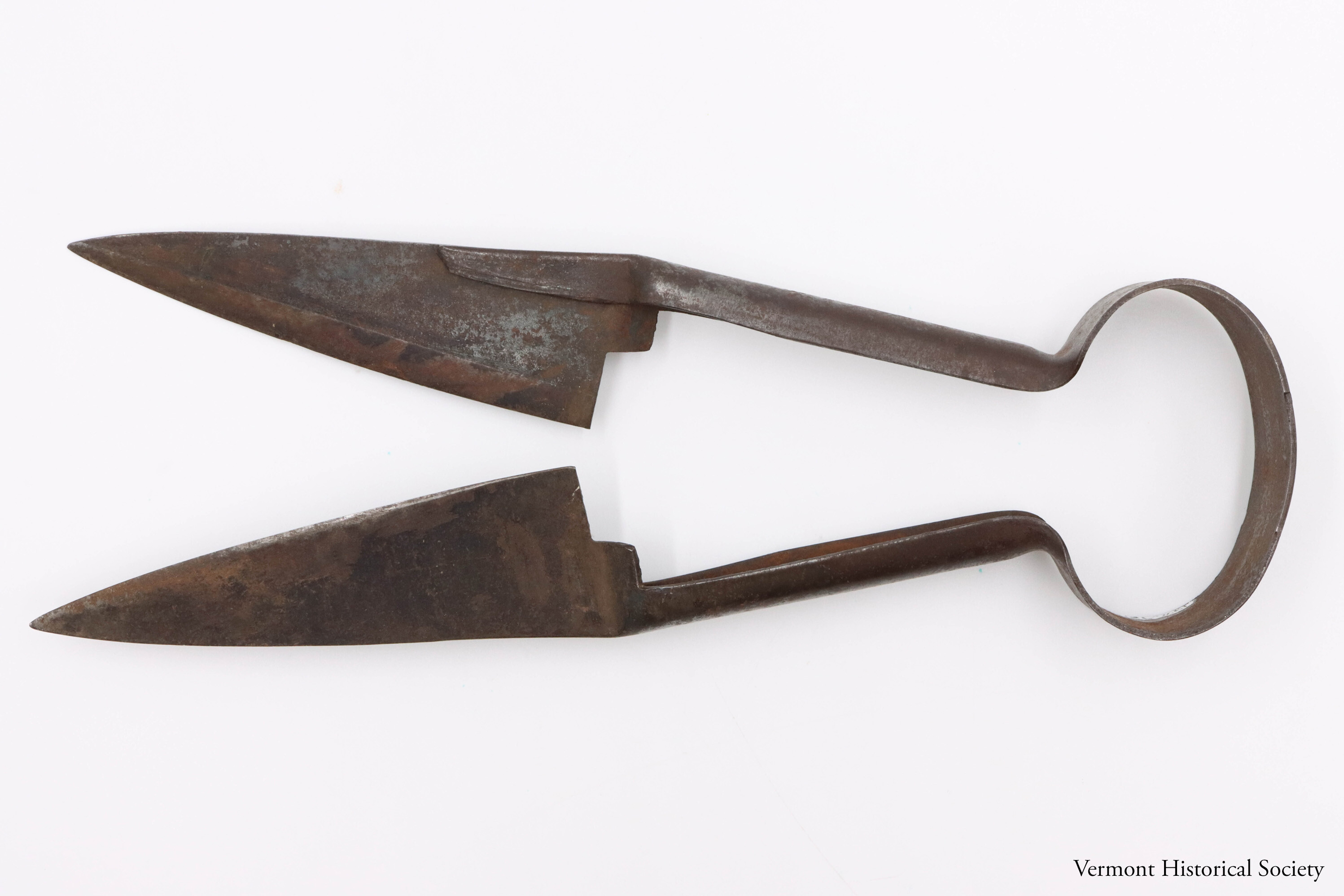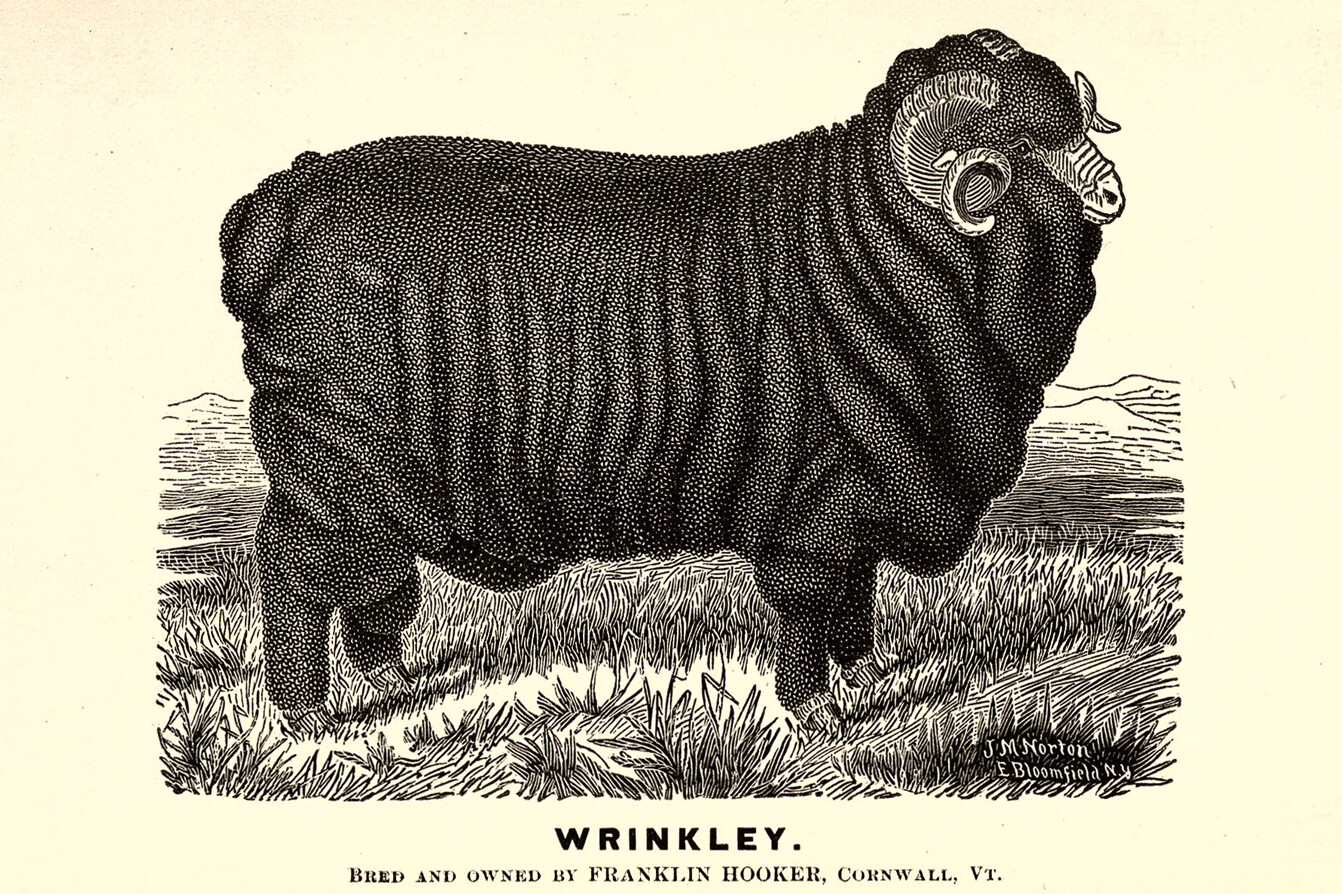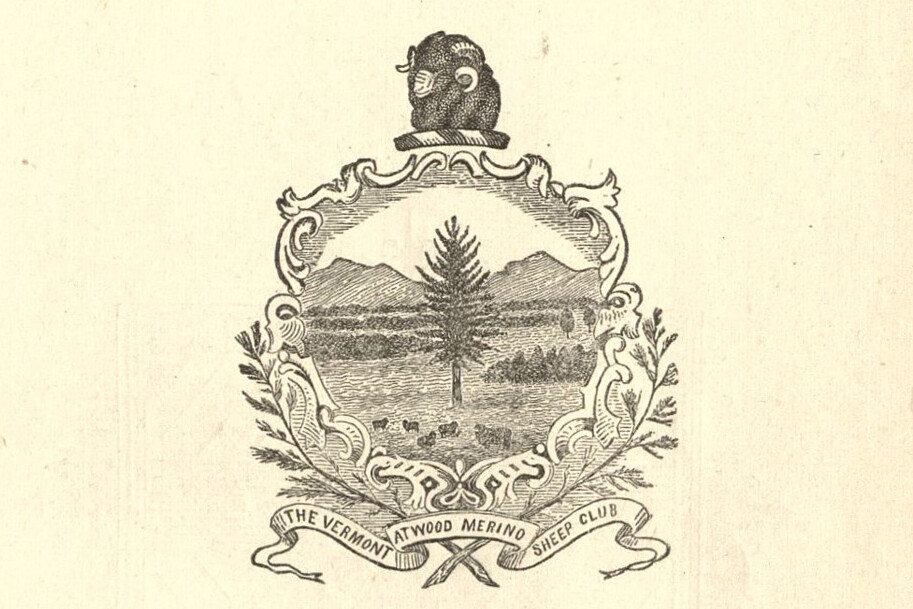Sheep in Vermont
How did sheep change Vermont?
Vermont’s landscape(a view or scene of land) looks very different today than it did nearly 200 years ago. Many places that are now covered with trees were open fields. In the 1830s and 1840s, those fields were full of Merino sheep.
In 1811, William Jarvis brought around 400 Merino sheep to Vermont from Spain. These Merino sheep had long, soft fleece(the wool that covers a sheep) that could be made into wool clothes and blankets. From his farm in Weathersfield, Jarvis started the Vermont sheep boom(a time of sudden or quick growth) that lasted about 40 years.
Almost 1.7 million sheep lived in Vermont in 1840. At the same time, fewer than 300,000 people lived in the state. There were nearly six times more sheep than people in Vermont! These sheep produced almost 3.7 million pounds of wool.
When the sheep boom started, many Vermonters lived on farms. They cut down trees and used the wood to build houses and barns. They burned wood in fires to make potash(a product made from wood ashes that was used to make soap). Farmers planted crops and tried to grow what they needed to survive. But Vermont’s soil was poor and covered with stumps and rocks.
The Merino sheep liked the rocky hills and valleys of Vermont. The sheep ate grasses and hay that grew well in Vermont soil. Because of the cool weather, the sheep developed thick, heavy fleeces. Each spring, farmers sheared(removed the fleece by cutting, like a haircut) the sheep to get the wool. And each year, the sheep grew another coat of fleece. Farmers traded wool for other goods or sold it to make money.
During this time, new textile(fabric or cloth made by weaving) factories in New England needed raw wool to make yarn and cloth. Wool from Vermont cost less than wool from other countries because of tariffs(a tax placed on goods going to or from another country). Some farmers started to focus on sheep instead of general farming. They started buying and breeding(mating animals to produce babies) more sheep in hopes of making more money. Successful farmers needed more land where their larger flocks could graze. Some poor farmers left the state after selling their land to richer neighbors.
By the 1850s, changes outside of Vermont ended the sheep boom. New transportation, like canals and then railroads, linked the mid-west to New England. Mid-western farmers with better land could ship their cheaper wool to factories in the east. The government changed the taxes and the price of wool dropped. It became harder for Vermont sheep farmers to make enough money.
Although the number of sheep started going down, some farmers continued to breed sheep. They sold rams(male sheep) for a lot of money to farmers in faraway places like California and Australia. Other farmers started keeping dairy cows instead of sheep. Vermont farmers produced products to sell, not just what they needed to survive.
Over 200 years have passed since the start of the sheep boom. But you can still see evidence of how sheep changed Vermont. In some places in the state, there are stone walls in the middle of the woods. During the sheep boom, these stone walls divided the open land into pastures for sheep. These piles of rocks show where farm fields have grown back into forests. They are evidence of the ways Vermonters have used the land and how that has changed over time.
Thinking About History
Historians ask questions to think deeply about history.
During the sheep boom, some farmers made a lot of money keeping sheep and producing wool. Factory owners and workers made money processing the wool. But keeping sheep changed the landscape of Vermont. Was this wise use of the land? How can people produce goods and protect the environment at the same time?
Learn More
Follow the links below to explore related topics.
Look more closely at the bird’s-eye view map of Ludlow at the Library of Congress
Learn more about panoramic maps
Read the article From Potash to Ready Cash from Green Mountaineer Magazine
See the official Vermont coat of arms
Learn more about children who worked in textile factories
Watch the video Greenbank’s Hollow from This Place in History
Watch the video Winooski Mills from This Place in History
Watch the video History in Your Backyard from This Place in History
Watch the video Little River State Park from This Place in History
Learn more about catamounts that sometimes attacked sheep
Watch a video about wrinkly Merino sheep at the Greenfield Village Museum
Watch the video Vermonters Spin a Good Yarn (1973)
Copy and paste this citation to show where you did your research.
Vermont Historical Society. "Sheep in Vermont." Vermont History Explorer. Accessed December 26, 2025. https://vermonthistoryexplorer.org/sheep-in-vermont



